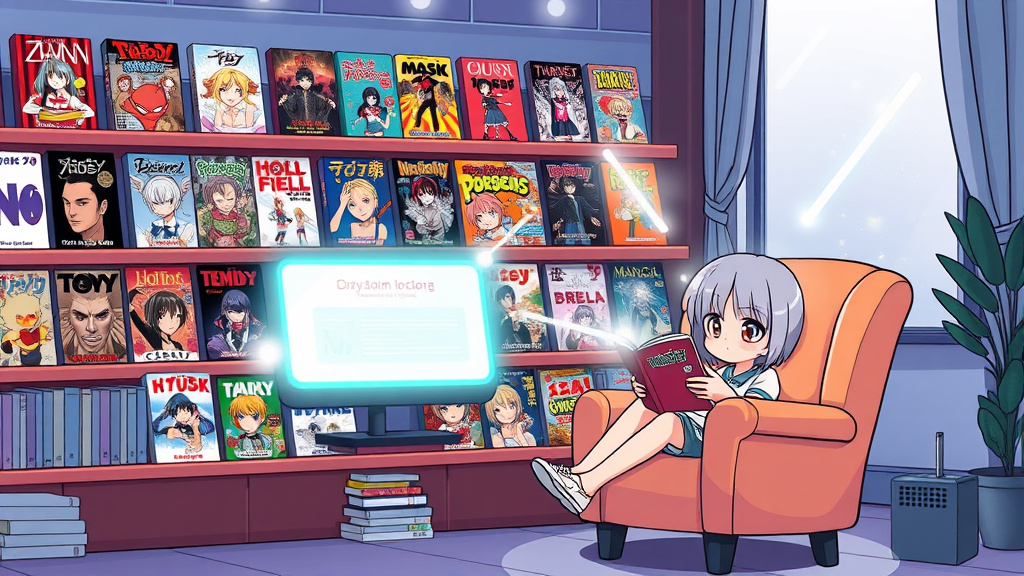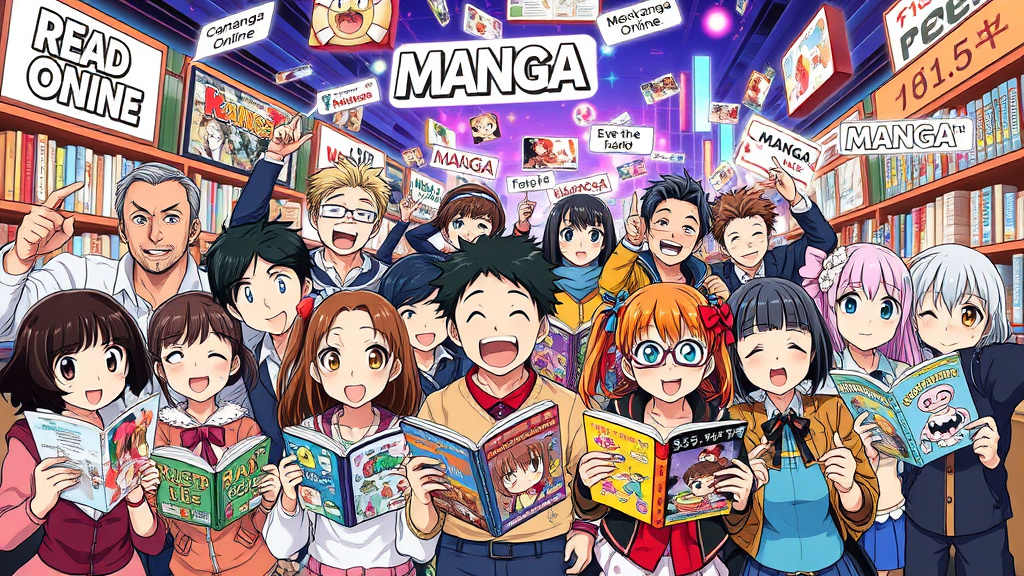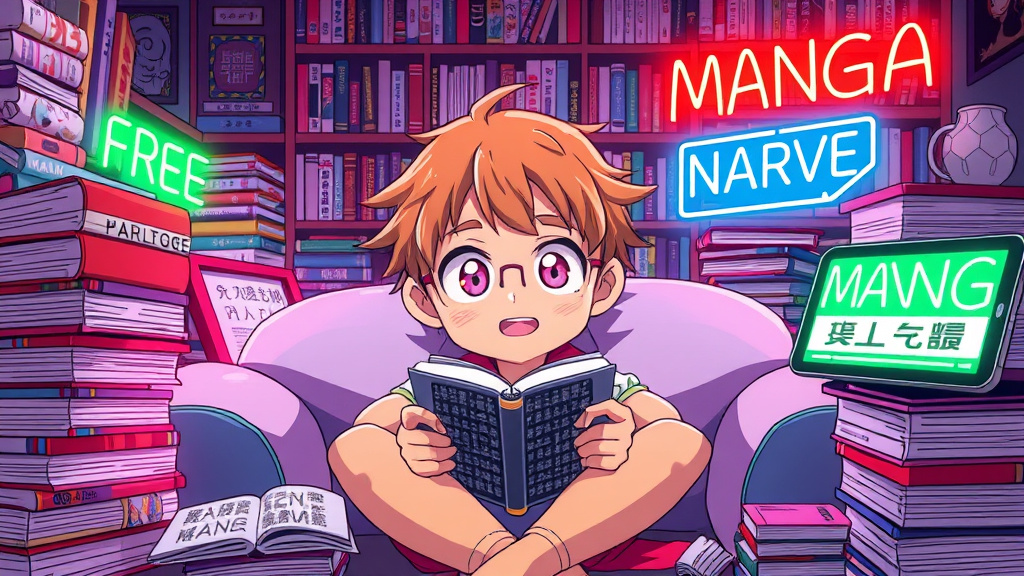In recent years, anime graphic novels have emerged as a captivating intersection between visual storytelling forms, blending the vibrant aesthetics of anime with the narrative depth of graphic novels. This hybrid genre not only broadens the creative horizons for artists and writers but also resonates with a diverse global audience eager for innovative narrative experiences. As the boundaries between traditional manga, Western comics, and animated series continue to blur, understanding the evolution, influence, and future potential of anime graphic novels becomes vital for enthusiasts and industry insiders alike.
The Evolving Relationship Between Anime and Graphic Novels
The relationship between anime and graphic novels has historically been intertwined, with manga serving as the primary foundational medium for many anime series. However, over the past decade, this relationship has expanded, evolving from simple source material to a more complex dialogue where each influences and inspires the other. The rise of anime-inspired graphic novels reflects this organic growth, where creators draw upon iconic visual styles and storytelling tropes from their favorite series while exploring new themes and narrative techniques within the graphic novel format.
This evolution underscores a broader cultural shift: the increasing acceptance of cross-media storytelling. Today, a story conceived as an anime series can be reimagined as a graphic novel, offering different pacing, artistic expression, and readership engagement. Conversely, graphic novels that incorporate anime-inspired art or narrative tropes can breathe new life into the traditional comic book scene, making it more vibrant and accessible to fans of animated series. Such cross-pollination not only enriches each medium but also strengthens the global community of fans, promoting a shared appreciation for diverse storytelling modalities.
 Hình minh họa: anime graphic novels – manhwa online web
Hình minh họa: anime graphic novels – manhwa online webBridging the Gap: Exploring the Shared Visual Language of Anime and Graphic Novels
At the core of the connection between anime graphic novels and traditional comics or manga lies a distinctive visual language—character designs, exaggerated expressions, dynamic action sequences, and an emphasis on vibrant color schemes. These elements serve as a universal visual shorthand that immediately communicates energy, emotion, and storytelling intent to audiences worldwide. The bold lines and expressive features common in anime seamlessly translate into the pages of graphic novels, creating a visual bridge that makes storytelling more engaging and immediate.
What makes this shared visual language powerful is its ability to evoke visceral emotional responses. Artists and writers capitalize on the familiarity of anime aesthetics—even when diverging into original stories—to instantly attract fans and create immersive worlds. The fluidity of motion, the intricate backgrounds, and the emotive character portrayal foster a sense of continuity across mediums, encouraging fans to view graphic novels not just as static stories but as dynamic extensions of anime worlds. This common visual grammar helps demystify complex themes and enhances storytelling clarity, making the medium accessible and compelling.

Anime-Inspired Graphic Novels: A Genre on the Rise
Anime-inspired graphic novels are carving out a unique niche in the graphic storytelling landscape, characterized by their vibrant art styles and often ambitious narratives. This genre’s rapid growth is fueled by a convergence of fan enthusiasm, technological advancements in digital art, and a global appetite for diverse narratives rooted in anime’s expressive visual culture. Artists often incorporate signature elements—such as chibi characters, detailed mechs, or supernatural motifs—while experimenting with the conventions of the graphic novel format to craft stories that feel both fresh and familiar.
What sets anime-inspired graphic novels apart is their potential to explore themes and genres that traditional Western comics may shy away from, such as spirituality, complex moral dilemmas, or intricate world-building. For many creators, this genre offers the freedom to push artistic boundaries while tapping into the emotional resonance of anime storytelling. As more publishers recognize the commercial and artistic potential of this fusion, anime-inspired graphic novels are poised to further influence the broader comics industry, attracting diverse audiences eager for bold visuals and layered narratives.
From Page to Screen and Back Again: The Influence of Anime on Graphic Novel Storytelling
Anime’s impact on graphic novel storytelling is profound—shaping narrative structures, character development, and visual styles. Many graphic novel creators draw inspiration from anime’s cinematic techniques, such as dynamic panel transitions, time manipulation, and layered symbolism. This influence results in stories that oscillate between deeply introspective moments and high-octane action, reminiscent of anime’s signature pacing and tone. When creators adopt these techniques, the storytelling becomes more fluid, engaging, and emotionally resonant, elevating graphic novels from mere comics to visual experiences akin to watching an animated masterpiece.
Conversely, graphic novels also influence anime by providing rich source material that is more detailed and nuanced than traditional scripts or storyboards. The back-and-forth exchange creates a cycle of inspiration that fuels innovation in both realms. Some anime adaptations of graphic novels succeed by capturing the essential visual and thematic elements, while others face challenges in translating the art’s depth into animated form. Nonetheless, this continuous dialogue between the two formats signifies a future where the boundaries between page and screen become even more fluid, allowing stories to evolve seamlessly across mediums.
Beyond Manga: Examining Western Graphic Novels Inspired by Anime Aesthetics
While manga has traditionally dominated the conversation about anime-inspired storytelling, Western graphic novels have increasingly adopted anime aesthetics to tell culturally diverse stories. These comics blend the manga-influenced art styles—such as large expressive eyes and dynamic action lines—with Western-themed narratives. Titles in this vein often explore themes like identity, technology, and social justice through vibrant visuals, reflecting the global influence of anime’s visual language.
This trend highlights a democratization of anime aesthetics beyond Japan, fostering a multicultural and multi-genre experimentation that transcends borders. Western creators incorporate anime-inspired visual elements to engage new audiences and challenge conventional storytelling formats, often resulting in hybrid narratives that appeal to both manga aficionados and new readers. This cross-cultural exchange enriches the global comics industry, opening avenues for innovative storytelling that respects artistic differences while celebrating shared visual and thematic tropes.
Creative Parallels: Analyzing the Art Styles and Narrative Techniques in Anime and Graphic Novels
The art styles and narrative techniques across anime and graphic novels are both convergent and divergent, but their creative parallels enhance storytelling depth. Both mediums leverage expressive character designs, innovative panel layouts, and thematic symbolism to evoke moods and underscore emotional arcs. In particular, the subliminal use of color, contrast, and visual motifs in anime inspires graphic novel artists to craft layered narratives that tap into subconscious associations, enriching the reader’s experience.
Narrative techniques like nonlinear storytelling, inner monologues, and multi-layered plots are staples in anime and are increasingly adopted by graphic novel creators. These approaches allow both formats to explore complex themes—such as existentialism, societal critique, or personal growth—through rich visual metaphors and dynamic storytelling devices. Recognizing these parallels deepens our appreciation for both art forms as sophisticated, adaptive storytelling systems capable of pushing creative boundaries and resonating with audiences on multiple levels.
Fan Culture Convergence: How Anime and Graphic Novel Communities Intersect
The communities surrounding anime and graphic novels have begun to overlap, driven by shared interests in visual storytelling and genre diversity. Fans of anime frequently seek out graphic novels that echo their favorite styles or narratives, leading to a vibrant crossover culture on platforms like social media, manga conventions, and online forums. This convergence fosters a sense of inclusivity, allowing fans to explore different formats while sharing their passion and interpreting stories through various lenses.
Moreover, fan communities actively promote and create content—fan art, reviews, and cosplays—that celebrate both mediums simultaneously. This symbiotic relationship encourages more creators to produce anime-inspired graphic novels with audience input, further cementing the cultural exchange. The interconnectedness of these communities exemplifies how collective fandom can propel industry innovation, leading to more diverse, inclusive, and boundary-pushing storytelling that appeals to a broad and engaged audience.
Thematic Resonance: Exploring Common Themes and Tropes in Anime and Graphic Novels
Anime and graphic novels often explore universal themes such as heroism, identity, love, loss, and societal conflict, which resonate deeply with audiences worldwide. These shared tropes—whether it’s the reluctant hero’s journey, dystopian futures, or coming-of-age stories—are expressed through distinct visual and narrative styles in each medium but ultimately reflect common human experiences. The adaptability of these themes across both forms demonstrates their fundamental importance in storytelling’s evolution.
What makes these themes compelling in both contexts is the ability to approach them through layered symbolism, aesthetic innovation, and emotional nuance. For instance, a graphic novel inspired by anime may diminish traditional genre boundaries, blending sci-fi with introspective character work. By analyzing these common themes, creators can craft narratives that are both familiar and novel, harnessing the power of visual storytelling to evoke empathy, challenge perceptions, and inspire reflection.
Graphic Novel Adaptations of Anime – Successes, Challenges, and Future Trends
Adapting anime into graphic novels has proven to be both a creative boon and a significant challenge. Successful adaptations often capture the essence of the original series—its art style, tone, and core themes—while offering new perspectives and expanded lore. For example, graphic novel versions of popular series like My Hero Academia or Attack on Titan have garnered acclaim for providing alternative insights into beloved worlds and characters, enriching the fan experience.
However, the transition from animation to static images poses challenges such as maintaining motion fluidity and conveying dynamic action scenes convincingly. Artists must balance authenticity with artistic reinterpretation, occasionally risking alienating purists. Looking ahead, advancements in digital art and augmented reality could revolutionize how anime is adapted into graphic novels, allowing for more interactive and immersive storytelling experiences. This future trend points toward richer cross-media collaborations which can deepen fan engagement and foster innovative storytelling formats.
The Future of Visual Storytelling – How Anime and Graphic Novels are Shaping the Industry
As technological innovations continue to democratize content creation and distribution, both anime and graphic novels are poised to shape the future of visual storytelling profoundly. The growing accessibility of digital tools allows independent creators to produce high-quality content aligned with anime aesthetics, contributing to an industry that values diverse voices and experimental forms. Meanwhile, trends like augmented reality, virtual reality, and interactive comics suggest new pathways for immersive storytelling that combine animation’s dynamism with graphic novels’ narrative depth.
Furthermore, the blending of anime and graphic novel storytelling formats will likely lead to hybrid genres that challenge conventional categorizations, broadening the scope of what visual storytelling can achieve. As audiences become more globalized and digitally connected, the demand for visually striking, emotionally resonant, and thematically rich narratives will accelerate, inspiring creators to innovate continuously. Ultimately, the synergy between anime and graphic novels promises to revolutionize narrative art, making storytelling more inclusive, multifaceted, and compelling than ever before.
Conclusion
The landscape of anime graphic novels is vibrant and rapidly evolving, serving as a nexus where diverse creative worlds converge. From exploring shared visual languages to analyzing thematic commonalities, the integration of anime aesthetics into the graphic novel realm exemplifies how visual storytelling adapts and flourishes in a digital age. With the rise of crossover communities, technological advancements, and innovative narrative approaches, anime graphic novels stand at the forefront of shaping the future of visual storytelling. Their capacity to blend art, emotion, and culture promises exciting developments that will resonate with audiences worldwide for years to come.





